Caocao Ancestral Temple: An Essential Stop for History Enthusiasts

An Essential Guide to Visiting Caocao Ancestral Temple
Nestled in the rich historical tapestry of Anyang, Henan Province, the Caocao Ancestral Temple stands as a testament to the legacy of one of China’s most intriguing figures—Cao Cao. Renowned as a statesman, poet, and military strategist during the tumultuous Three Kingdoms period, Cao Cao’s life and times continue to captivate the imagination of both history enthusiasts and casual travelers alike.
As you step into the temple grounds, you’re not just entering a site of worship; you’re traversing through the echoes of ancient China. The temple serves as both a shrine and an archaeological site, intricately linked to Cao Cao and his lineage. Here, visitors can explore a unique blend of cultural heritage and historical significance, offering insights into the life and ideologies of a man who played a pivotal role in shaping Chinese history.
The temple’s architecture reflects traditional Chinese design, adorned with intricate carvings and symbolic motifs that narrate tales from the past. Surrounding the temple, the serene landscapes provide a tranquil backdrop, inviting contemplation and reflection on the profound narratives that transpired in this very locale. Whether you’re a history buff eager to dive deep into the stories of the Three Kingdoms or simply seeking a moment of peace away from the bustling city, the Caocao Ancestral Temple promises an enriching experience that resonates with the soul of China’s ancient civilization.
Prepare to embark on a journey that intertwines history, culture, and spirituality, making your visit to the Caocao Ancestral Temple an essential chapter of your travels in China.
In This Guide
- An Essential Guide to Visiting Caocao Ancestral Temple
- The Rich History and Legends of Caocao Ancestral Temple
- Main Highlights: What You Absolutely Can’t Miss
- Planning Your Visit: A Practical Guide
- Tickets: Prices, Booking, and Tips
- How to Get There: A Complete Transportation Guide
- Local Cuisine and Accommodation Nearby
- Frequently Asked Questions
- Final Thoughts on Your Trip
The Rich History and Legends of Caocao Ancestral Temple
Nestled in the heart of Anyang, the Caocao Ancestral Temple, also known as the Cao Cao Gaoling Mausoleum, is not merely a resting place for the legendary warlord, but a captivating tapestry of history, culture, and myth. It serves as a monumental reminder of Cao Cao’s indelible mark on Chinese history during the tumultuous era of the Three Kingdoms.
Cao Cao, a pivotal figure in Chinese history, was born in 155 AD and rose to prominence as a warlord, statesman, and poet. His legacy is largely defined by his role in the power struggles that characterized the late Eastern Han dynasty. After his death in 220 AD, historical accounts, particularly from the Records of the Three Kingdoms, recount that his body was transported from Luoyang to Yecheng, where he was interred in a grand mausoleum situated in the hills near the Ximen Leopard Temple. This location, now referred to as the Gaoling, is approximately 12 kilometers west of his former capital.
The architectural design of the mausoleum is a sight to behold. Its A-shaped structure, oriented from west to east, features a two-chamber brick tomb accessed via a sloped passageway that measures nearly 40 meters in length. This impressive tomb complex spans approximately 740 square meters, with a trapezoidal layout that adds to its grandeur. The meticulous construction reflects not only the significance of Cao Cao’s legacy but also the advanced engineering skills of the Han dynasty.
As one explores the site, it becomes apparent that the Gaoling is more than just a burial site; it is a cultural beacon that confirms Cao Cao’s influential life and the practices of his time, including his advocacy for a frugal burial system. The excavation of the mausoleum has provided critical insights into the historical timeline of the Han and Wei dynasties, establishing a standard for archaeological studies in the region.
Legends surrounding Cao Cao add layers of intrigue to the temple. Known for his cunning and strategic prowess, tales of his life often blur the lines between fact and fiction. Some stories paint him as a tyrant, while others celebrate him as a poet and a visionary leader. His reputation has been immortalized in various forms of literature, including the famous historical novel, Romance of the Three Kingdoms, where he is depicted with both nobility and ruthlessness.
Visitors to the Caocao Ancestral Temple can not only absorb historical narratives but also partake in a journey through the rich tapestry of Chinese culture. The site serves as a pilgrimage for those wishing to honor Cao Cao’s memory and explore the legends that shaped an entire era. As travelers walk through the temple grounds, they can reflect on the life of a man whose legacy continues to resonate in Chinese history, literature, and folklore.
In summary, the Caocao Ancestral Temple is a must-visit for any traveler keen on delving into the depths of Chinese history and mythology. It stands as a testament to Cao Cao’s enduring influence and the intricate stories that continue to weave through the fabric of Chinese culture today.
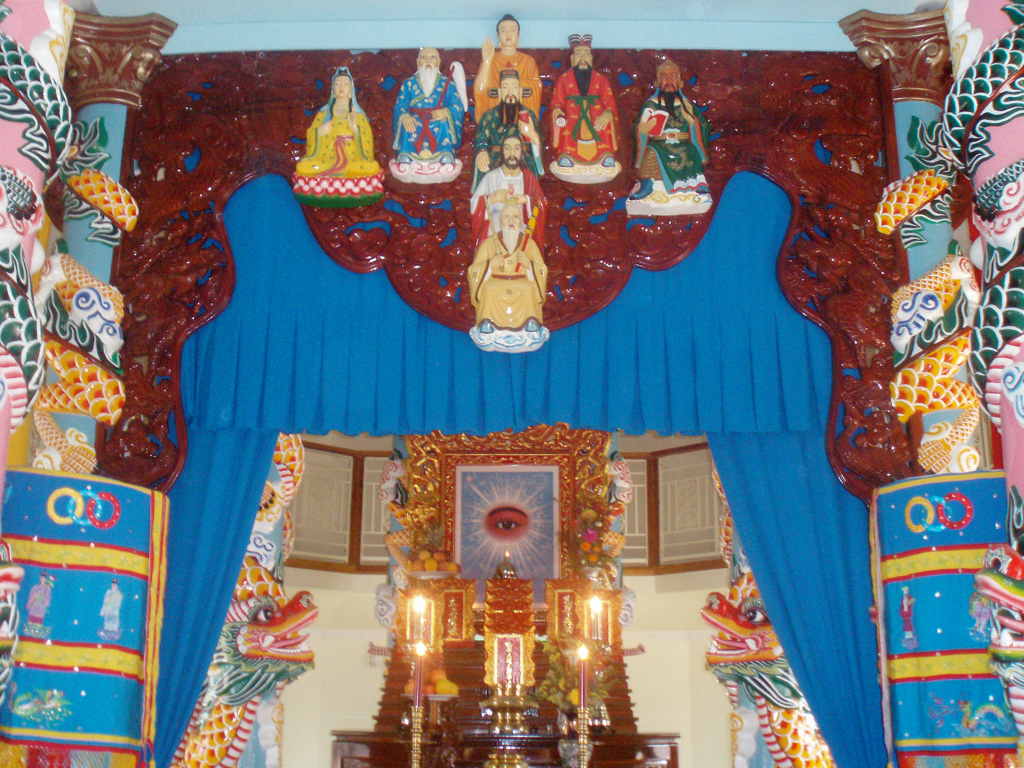
Caocao Ancestral Temple.
Main Highlights: What You Absolutely Can’t Miss
When visiting the Cao Cao Ancestral Temple (曹操宗族墓群), international travelers are in for a treat, as this site offers a unique glimpse into China’s rich historical tapestry. Here are the main highlights that you absolutely cannot miss during your visit:
The Mausoleum of Cao Cao
One of the foremost attractions at the site is the Cao Cao Gaoling Mausoleum Museum, located in Anfeng Township, just 12 kilometers from the ancient capital of Yecheng. This impressive structure is recognized as the final resting place of Cao Cao, a pivotal figure from the Three Kingdoms period. The mausoleum showcases an A-shaped design, characterized by its dual chambers and a sloped tomb passage measuring 39.5 meters long and 9.8 meters wide. The craftsmanship and scale of the tomb, which covers approximately 740 square meters, echo the significance of Cao Cao’s legacy in Chinese history.
Rich Historical Context
As you explore the mausoleum, take time to absorb the historical context surrounding it. Cao Cao’s life and death in 220 AD are well-documented in ancient texts, including the “Records of the Three Kingdoms.” The mausoleum not only confirms the historical accounts but also reflects Cao Cao’s austere lifestyle, as evidenced by the relatively few artifacts discovered within. Visitors are encouraged to consider hiring a guide to enhance their understanding of the site’s historical significance.
The Ancestral Temple Ruins
Adjacent to the mausoleum, the Cao Cao Ancestral Temple offers a glimpse into the cultural practices of the time. This site is where rituals honoring ancestors were performed, illustrating the importance of family lineage and respect for the past in traditional Chinese society. The temple’s architecture and layout provide insight into the religious and cultural practices of the era.
Nearby Historical Sites
While at the Cao Cao Ancestral Temple, consider incorporating visits to nearby historical sites to enrich your experience. Yin Xu, the site of the ancient Shang Dynasty capital, is a short drive away and is home to significant archaeological finds, including oracle bones and bronze artifacts. The National Museum of Chinese Writing in Anyang is another must-visit, showcasing the evolution of Chinese characters and the rich literary heritage of the Chinese civilization.
Practical Tips
- Opening Hours: The Cao Cao Gaoling Mausoleum Museum is open from 8:30 AM to 6:00 PM (with the last admission at 5:00 PM).
- Ticketing: Note that child tickets must be purchased separately at the ticket counter, so plan accordingly.
- Guided Tours: Hiring a guide can greatly enhance your visit, providing deeper insights into the historical significance of the mausoleum and temple.
Conclusion
A visit to the Cao Cao Ancestral Temple is not merely a stroll through ancient ruins; it is a journey into the heart of Chinese history. The site offers a profound understanding of the cultural and historical legacy of one of China’s most famous figures, making it an essential stop on any itinerary exploring the treasures of Anyang and beyond. Don’t miss the chance to immerse yourself in this captivating slice of history!
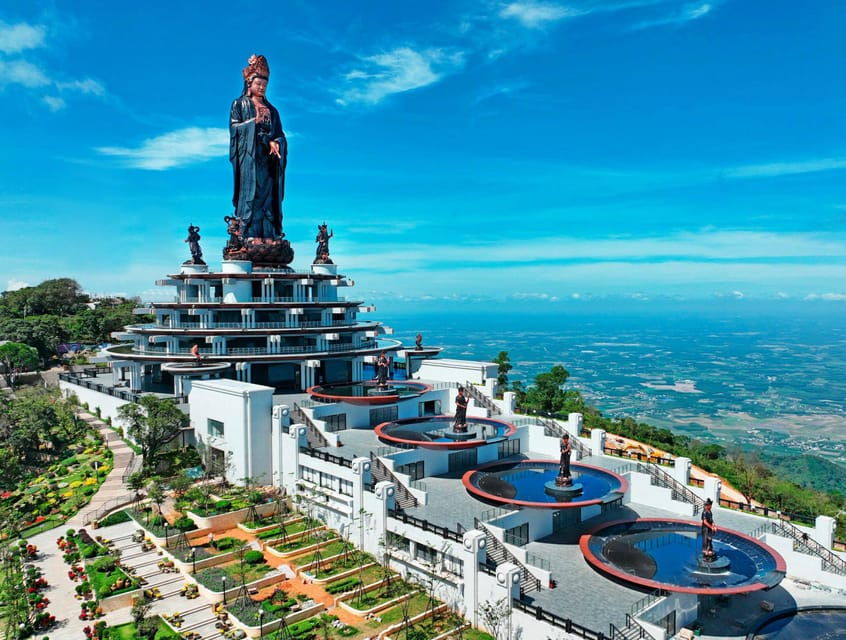
Caocao Ancestral Temple.
Planning Your Visit: A Practical Guide
Visiting the Caocao Ancestral Temple, also known as the Cao Cao Gaoling Mausoleum Museum, offers a unique glimpse into the rich history of the Three Kingdoms period in China. Nestled in the scenic surroundings of Anyang, Henan Province, this site is an essential stop for history enthusiasts and travelers alike. Here’s how to make the most of your visit.
Getting There
Location:
The Caocao Ancestral Temple is located in Anfeng Township, approximately 12 kilometers west of Anyang City. It’s easily accessible via local transportation options, including buses and taxis.
Transport Tips:
– By Train: Take a high-speed train to Anyang Railway Station. From there, taxis are readily available to take you to the temple.
– By Bus: Local buses from Anyang to Anfeng Township frequently run and provide an economical option for travelers.
Opening Hours
- Daily Hours: 8:30 AM – 6:00 PM (last admission at 5:00 PM)
- Best Time to Visit: Arriving early in the morning allows you to enjoy a quieter experience. Weekdays are generally less crowded than weekends.
Admission Fees
- Ticket Prices: Children require their own tickets; however, there are no half-price tickets available for children through some booking platforms. Be prepared to purchase separate tickets at the entrance if necessary.
- Guided Tours: Hiring a guide is highly recommended to enrich your experience, as the site has limited artifacts on display, and a knowledgeable guide can provide valuable insights into the history and significance of the temple.
What to Expect
Architecture and Layout:
The temple is notable for its A-shaped structure, consisting of a complex brick tomb with a sloped passage leading to multiple chambers. The impressive dimensions of the tomb highlight the grandeur of Cao Cao’s final resting place.
Key Highlights:
– Tomb Passage: The sloping tomb passage is 39.5 meters long and 9.8 meters wide, leading to the main chambers.
– Historical Significance: The site confirms historical records about Cao Cao’s burial and provides insights into the burial customs of the Han and Wei Dynasties.
Nearby Attractions
After visiting the temple, consider exploring the following nearby sites:
– Yin Xu: The archaeological site of the ancient Shang Dynasty capital, featuring significant artifacts and ruins.
– National Museum of Chinese Writing: A modern museum dedicated to the evolution of Chinese writing, showcasing oracle bones and various writing systems.
– Taihang Grand Canyon Scenic Area: A stunning natural landscape ideal for hiking and enjoying breathtaking views.
Travel Tips
- Dress Comfortably: Wear comfortable shoes, as you may need to walk on uneven terrain.
- Hydrate: Carry water, especially during warmer months, to stay hydrated while exploring.
- Photography: The temple and surrounding areas are picturesque; don’t forget your camera!
Conclusion
A visit to the Caocao Ancestral Temple is not only a journey through history but also an opportunity to soak in the cultural heritage of China. By planning your trip carefully and considering the tips outlined above, you can ensure a memorable and enriching experience at this historical site. Enjoy your journey into the past!
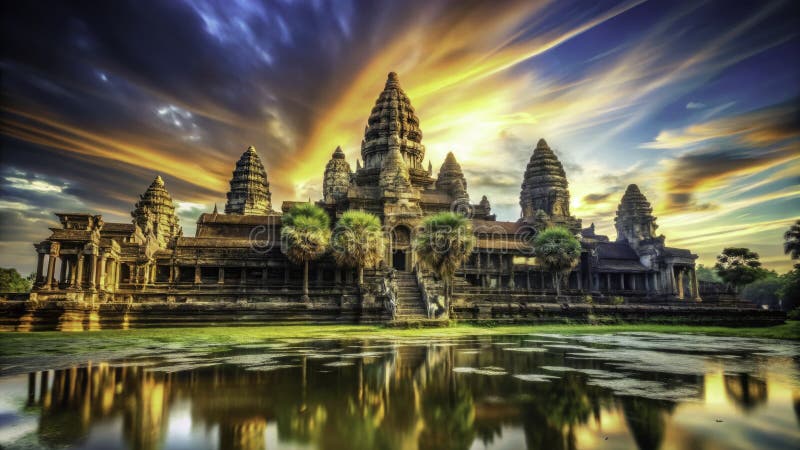
Caocao Ancestral Temple.
Tickets: Prices, Booking, and Tips
When planning your visit to the Cao Cao Ancestral Temple (曹操宗族墓群), it’s essential to keep ticket prices, booking options, and useful tips in mind to ensure a smooth and enjoyable experience.
Ticket Prices
- General Admission: Approximately 30 CNY (about $4.50 USD).
- Children: Full-price tickets apply for children aged 1.2 meters (4 feet) and above. Unfortunately, half-price tickets are not available for children, so if you’re traveling with kids, plan to purchase full-price tickets for everyone.
- Guided Tours: Hiring a guide is highly recommended, as it can enhance your understanding of the site’s historical significance. Expect to pay an additional fee for this service, which typically starts at around 100 CNY (about $15 USD) for a group.
Booking Options
-
On-Site Purchase: You can buy your tickets directly at the entrance. However, be prepared for potential queues, especially during peak tourist seasons.
-
Online Booking: For a more convenient experience, consider booking your tickets online through platforms like Trip.com or local Chinese travel sites. This can save you time and ensure entry, especially during busy periods.
-
E-Tickets: Some online tickets may need to be exchanged for paper tickets at the entrance. Pay attention to the instructions during the booking process to avoid any inconvenience.
Tips for Your Visit
-
Timing: The temple is open from 8:30 AM to 6:00 PM, with the last admission at 5:00 PM. Aim to arrive early to avoid crowds and have ample time to explore.
-
Bring Cash: While many places may accept cards or mobile payments, it’s always a good idea to carry some cash for smaller purchases or snacks.
-
Plan for Weather: The site is outdoors, so check the weather forecast and dress accordingly. Comfortable shoes are a must, as you’ll be doing a fair bit of walking.
-
Photography: Don’t forget your camera! The temple and its surroundings provide numerous opportunities for stunning photographs. Just be mindful of any restrictions on photography inside certain areas.
-
Explore Nearby Attractions: The Cao Cao Ancestral Temple is part of a rich historical area. Consider extending your trip to visit nearby sites such as the Yin Xu ruins and the National Museum of Chinese Writing.
By keeping these tips and details in mind, your visit to the Cao Cao Ancestral Temple will surely be a memorable highlight of your travel itinerary through Anyang. Enjoy your journey into the depths of Chinese history!
How to Get There: A Complete Transportation Guide
To reach the Caocao Ancestral Temple, also known as the Cao Cao Gaoling Mausoleum, visitors will find several convenient transportation options, whether arriving from nearby cities or exploring the region on a broader itinerary.
By Air
The nearest major airport to the Caocao Ancestral Temple is Anyang Airport (AYN), located approximately 20 kilometers away. Although it primarily serves domestic flights, travelers can connect here from larger airports such as Beijing Capital International Airport (PEK) or Zhengzhou Xinzheng International Airport (CGO). From the airport, you can hire a taxi or arrange a shuttle to take you directly to Anyang.
By Train
Anyang Railway Station offers a more economical option for train travel. This station is well-connected with several major cities in China, including Beijing, Zhengzhou, and Xi’an. High-speed trains to Anyang are frequent and can significantly cut down travel time. Once you arrive at Anyang Railway Station, you can take a taxi or use a ride-hailing app to reach the temple, which is about a 30-minute drive away.
By Bus
Public buses are another viable option for reaching the Caocao Ancestral Temple. The Anyang Long-Distance Bus Station has services that connect to various cities in Henan Province. Upon arrival, you can take a local taxi or public transport to the temple. This option may take longer but is often the most budget-friendly.
By Car
For those who prefer to drive, renting a car is an excellent way to explore the region at your own pace. The temple is located about 12 kilometers west of Anyang city center, and the drive is straightforward. Follow signs towards Anfeng Township, where the mausoleum is situated. Parking is available near the temple entrance.
Local Transportation
Once in Anyang, local taxis and ride-hailing services like Didi are readily available to take you to the Caocao Ancestral Temple. If you prefer public transportation, bus routes also connect the city center to the mausoleum. Be sure to check the local schedules and routes for the most convenient options.
Tips for Travelers
- Language: While many transportation staff may speak basic English, it’s advisable to have your destination written in Chinese characters to show taxi drivers or bus staff.
- Timing: Plan your trip during the temple’s opening hours, which are from 8:30 AM to 6:00 PM (with admission closing at 5:00 PM).
- Explore Nearby Attractions: The Caocao Ancestral Temple is part of a rich historical area. Consider visiting nearby sites like Yin Xu or the National Museum of Chinese Writing to enhance your cultural experience.
By utilizing these transportation options, visitors can easily access the Caocao Ancestral Temple and appreciate its historical significance amidst the beautiful landscapes of Anyang.
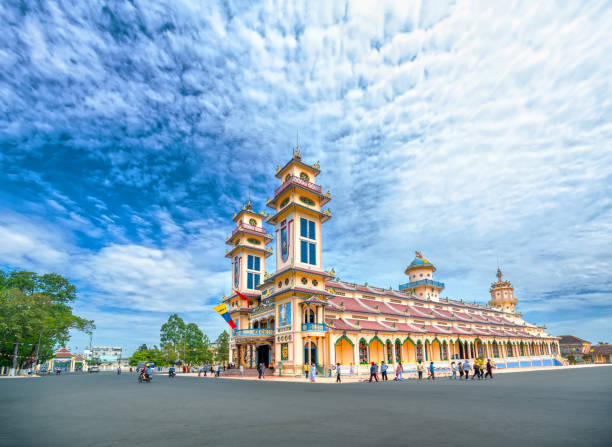
Caocao Ancestral Temple.
Local Cuisine and Accommodation Nearby
When visiting the historical Cao Cao Ancestral Temple (曹操宗族墓群), immerse yourself not only in the rich cultural tapestry of the site but also in the local culinary delights and accommodations that enhance your travel experience. Here are some recommendations to ensure your stay is both comfortable and flavorful.
Local Cuisine
-
Anyang Cuisine: This region is known for its hearty and delicious dishes that reflect the agricultural heritage of Henan Province. Don’t miss trying Hulao Steamed Buns (胡辣汤包), which are fluffy buns filled with a spicy soup that warms the soul. Anyang Noodles (安阳面条) are another local staple, typically served with a variety of toppings including braised meats and seasonal vegetables.
-
Traditional Henan Dishes: For a taste of authentic Henan flavors, visit a local eatery and order Braised Fish or Steamed Dumplings. They often incorporate fresh ingredients and traditional cooking methods that highlight the region’s culinary history.
-
Street Food: Wander through the local markets to sample Jianbing (煎饼), a savory crepe filled with eggs, vegetables, and your choice of meat or tofu. Pair it with a refreshing cup of Suanmeitang (酸梅汤), a sweet and sour plum drink, perfect for quenching your thirst.
-
Restaurants Nearby:
- Anyang Zhang’s Restaurant: Known for its rich flavors and welcoming atmosphere, this restaurant specializes in local dishes and offers an extensive menu that caters to different tastes.
- Henan Provincial Cuisine Restaurant: Here, you can enjoy a variety of traditional dishes in a comfortable setting, perfect for families or groups.
Accommodation Options
-
Anyang Hotel: Just a short drive from the Cao Cao Ancestral Temple, this hotel offers comfortable rooms and modern amenities. Guests can enjoy a complimentary breakfast featuring local specialties, making it a great start to your day of exploration.
-
Yingbin Hotel: A well-rated option for international travelers, Yingbin Hotel provides a range of services including free Wi-Fi and a fitness center. Its proximity to major attractions in Anyang makes it an ideal base for your adventures.
-
Hostels and Guesthouses: For budget travelers, consider staying at one of the local hostels or guesthouses that offer a more intimate experience. Many are situated within walking distance of the temple and provide an opportunity to meet fellow travelers.
-
Boutique Hotels: For a unique experience, look for boutique hotels that incorporate local decor and offer personalized service. These hotels often reflect the cultural heritage of the area and provide a cozy atmosphere.
Conclusion
While visiting the Cao Cao Ancestral Temple, take the time to indulge in the local cuisine and enjoy the hospitality of Anyang’s accommodations. Whether you’re savoring a traditional dish or resting in a comfortable hotel, your experience will be enriched by the culture and flavors of this historic region.
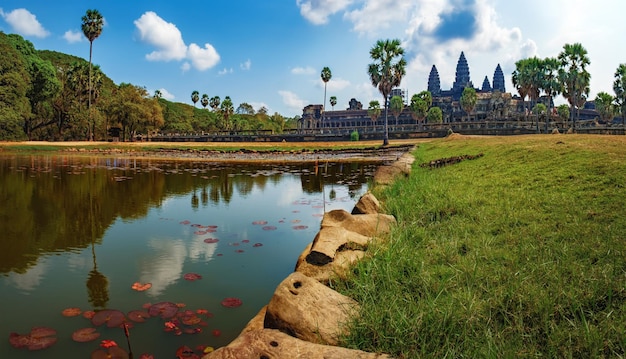
Caocao Ancestral Temple.
Frequently Asked Questions
Frequently Asked Questions about Cao Cao Ancestral Temple
-
Where is the Cao Cao Ancestral Temple located?
The Cao Cao Ancestral Temple, also known as the Cao Cao Gaoling Mausoleum Museum, is situated in Anfeng Township, approximately 12 kilometers west of Yecheng, in Anyang, Henan Province, China. -
What are the opening hours of the temple?
The temple is open daily from 8:30 AM to 6:00 PM, with the last admission at 5:00 PM. Be sure to plan your visit accordingly to make the most of your time there! -
Is there an admission fee?
Yes, there is an admission fee to enter the Cao Cao Ancestral Temple. It’s important to note that children also require tickets, so be prepared to purchase tickets for everyone in your group. -
Are guided tours available?
Yes, hiring a guide is highly recommended to enhance your experience. The site is extensive, and a knowledgeable guide can provide valuable insights into the history and significance of the mausoleum. -
What should I expect to see at the temple?
The temple complex features a large A-shaped mausoleum with intricate architectural details, including a two-chamber brick tomb, sloped tomb passage, and various side chambers. While the site may not have a vast array of artifacts, the structure itself and its historical context are fascinating. -
How do I get to the Cao Cao Ancestral Temple?
The temple is accessible by private vehicle or taxi from Anyang. Public transportation options may be limited, so consider arranging for a private tour or using a ride-sharing app if you prefer not to drive. -
Can I take photos inside the temple?
Photography policies can vary, so it’s best to check for any specific restrictions upon arrival. Generally, you should be able to take photos in most outdoor areas, but be respectful of any guidelines regarding indoor photography. -
What other attractions are nearby?
After visiting the Cao Cao Ancestral Temple, consider exploring other nearby historical sites, such as Yin Xu (the ancient capital of the Shang Dynasty) and the National Museum of Chinese Writing, both of which are rich in cultural heritage and well worth a visit.
Final Thoughts on Your Trip
As you conclude your journey through the historical and cultural treasures of the Cao Cao Ancestral Temple complex, take a moment to reflect on the rich tapestry of Chinese history that unfolds before you. This site is not merely a mausoleum; it is a testament to the profound legacy of Cao Cao, a figure whose life and influence shaped the very fabric of the Three Kingdoms era.
Wandering through the intricately designed tomb and the surrounding landscapes, you’ll find yourself transported back to an age of valor, strategy, and artistry. The echoes of the past resonate through the ancient stones, urging you to appreciate the stories of ambition and power that have defined Chinese civilization for centuries.
Whether you’ve explored the nearby historical sites of Yinxu and the National Museum of Chinese Writing or ventured into the breathtaking landscapes of the Taihang Grand Canyon, the experiences you gather will undoubtedly enrich your understanding of this remarkable region.
As you leave the Cao Cao Ancestral Temple, carry with you not just memories, but a deeper connection to the history that continues to shape modern China. May you find inspiration in the legacies of those who came before and a sense of wonder in the journey that lies ahead. Safe travels!